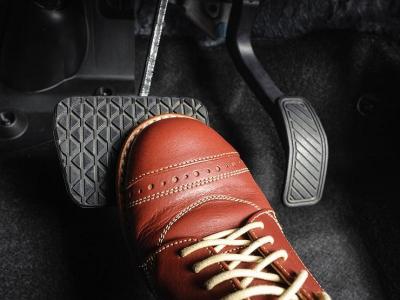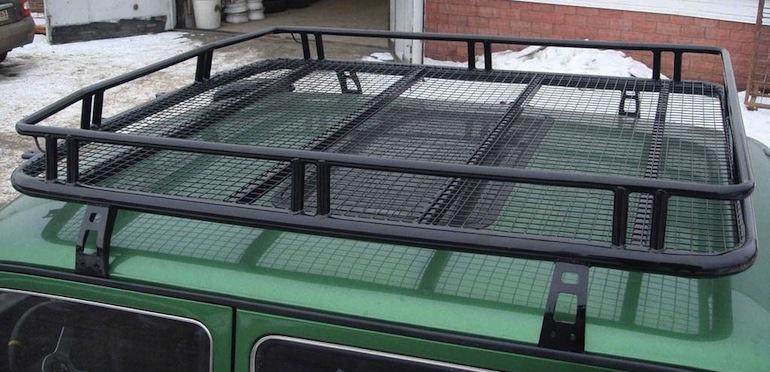
DIY car roof rack
Content
Roof railing is a good option to secure bulky cargo on the roof. The car will not lose in appearance. Rails do not affect aerodynamic performance and fuel consumption. They can not be removed from the car (unlike a home-made trunk-basket, box, which are inconvenient to carry empty).
Regular luggage compartment in the car does not always satisfy the driver. If you need to transport a large load, get out into nature, the main cargo compartment may not be enough. Many car models are equipped with standard roof rails, there are factory places for installation. But in some cars there are no holes for attaching rails or cross members. Do-it-yourself luggage box on the roof of a car or an original product will be the way out.
Types of trunks
The cargo compartment on top of the car is usually used rarely: a bicycle rack, for example, may be needed several times a year. Therefore, the owners prefer removable structures that are easy to install if necessary and just as easy to dismantle. Any trunk reduces the aerodynamic performance of the car, increases fuel consumption and can make it difficult to control.
Products differ in design, material, type of installation and purpose. Depending on what cargo is planned to be transported, choose the type of luggage. For long trips, it will be convenient to use an expeditionary one, if a single transportation of a canister or wheels is planned, it is enough to install a longitudinal or transverse profile.
By design
The most common designs:
- crossbars;
- bus box;
- forwarding;
- specialized.

Bicycle rack
Specialized roof racks are designed to carry specific items and have special locks, fasteners and straps, for example, to install a boat or bicycle. It is not always possible to transport oversized cargo on the roof (according to the rules, the protruding part of the trunk in front should not wind more than 20 cm above the windshield, the cargo should not protrude behind the overall dimensions of the car). For large-scale transportation, it is better to use a towbar and a trailer.
Expeditionary compartments are baskets with sides that are installed on crossbars (rails) or have an individual design and are installed on the roof.
Autoboxes are hard and soft. Lightweight closed compartments are made under a certain brand, have optimal shapes for leveling the decrease in aerodynamics, and fasteners are provided. Rigid wardrobe trunks are intended for transportation of personal things.
Crossbars. The most common class is a welded or pvc structure in the form of transversely installed strips. On the transverse panels, you can secure the load, install a basket or a trunk with a side. The universal design is suitable for transporting irregularly shaped cargo.
appointment
For minibuses, steel roof rails and crossbars are used, which can withstand up to 150 kg of weight on two supports. For passenger cars, the standard baggage weight (together with the weight of the trunk) is up to 75 kg.
Plastic boxes mounted on aluminum bars can be loaded up to 70 kg. If lightweight plastic is used for the cross members, the total load capacity must not exceed 50 kg.
According to Art. 12.21 of the Code of Administrative Offenses of the Russian Federation, the load on the roof must be rigidly fixed, must not change the center of gravity of the car, obstruct the view. If the cargo protrudes beyond the dimensions of the car in front and behind by more than 1 meter, on the sides by more than 0,4 m, it is necessary to hang marker warning lights and a sign “oversized cargo” around the perimeter.
By material
The load capacity of the trunk depends on the material of manufacture: the softer the material, the less weight can be installed on it.
Steel baskets are heavy, difficult to mount and remove, but capable of withstanding 150 kg. If overloaded or improperly distributed, the crossbar fasteners can bend the roof.

Roof rack
Aluminum crossbars are the most common material, they do not oxidize, they are light, they can withstand loads up to 75 kg. If they bend from great gravity, the roof will be bent.
Made of ABS plastic. Lightweight, rigid panels are used for longitudinal rails, products with a metal insert withstand the maximum load. Rails are installed in regular places.
How to make your own roof rack
A good option to save money would be the manufacture of luggage racks. Advantages:
- arrangement of the compartment for specific needs;
- ease of dismantling, for single shipments;
- installation on the crossbars of a grid or a hard box that protects things.
Before work, the shape of the structure is carefully measured in accordance with the dimensions of the car. For a roof over 2 meters in length, you need a trunk for 6 brackets, for sedans and hatchbacks, it is enough to make 4 fasteners. You can draw a drawing of a car roof rack with your own hands, you can take a sketch from the Internet or come up with it.
What will you need?
For a homemade trunk, an aluminum profile is used, with a section of 20x30. Pipe structures are taken, if a board is provided in the trunk, as an upper protective rack. For crossbars and crossbars, a square profile is used. What will be required:
- semi-automatic welding machine;
- tape measure, ruler;
- grinder with a set of discs;
- drill, drill;
- steel plates for the manufacture of fasteners;
- primer, car paint.
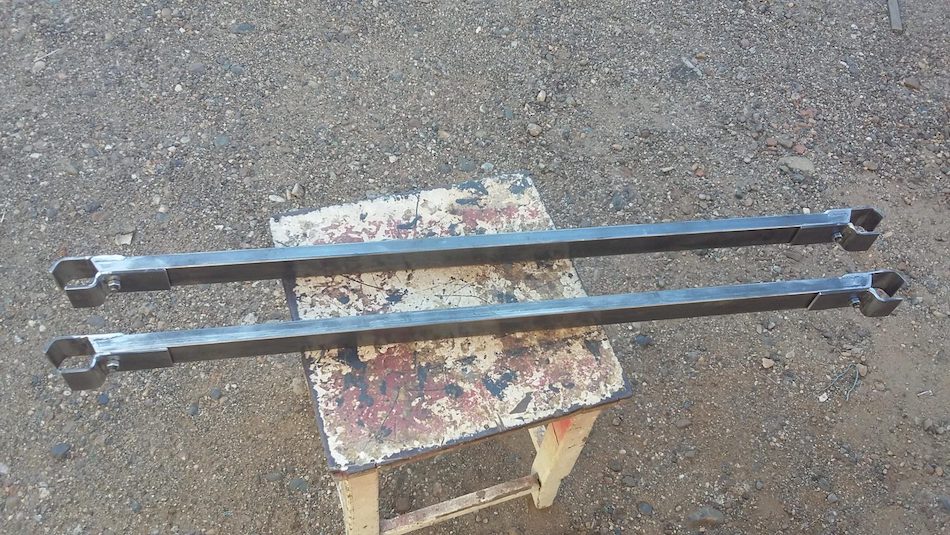
Items to work
The best place for mounting the structure will be gutters. Clamps are mounted in a drain, it is not required to drill a roof.
Manufacturing process
First you need to make the rails, which will become the supporting frame. The base can be made around the perimeter of the roof and welded cross members onto it. And you can limit yourself to two slats, on which 2-5 transverse aluminum slats will be welded. The streamlined trunk reduces the aerodynamic coefficient minimally, but increases the weight of the compartment. On the crossbars you can install a closed organizer or box.
Work plan:
- Measure and cut an aluminum profile - 2 longitudinal strips, 3 transverse.
- Clean up cuts. If the base is open, you can bend the ends, install plastic plugs, fill with foam.
- Weld the base of the longitudinal and transverse strips.
- Clean up the seams. Aluminum does not need to be treated with anticorrosive.
- Reinforce the structure with fiberglass, which is applied to the foam and glued to the cross members.
- Paint the base.
If the trunk is in the form of a basket, you will need to weld the upper base of a smaller perimeter, weld the side strips to the bottom, bend the strips (to get a cone) and weld the top rim. Although this is not a good idea, as it will be difficult to remove the trunk, the compartment will be heavy, which will have a bad effect on the overall load capacity.
Car roof mount
Installation on the roof is carried out on fasteners that are mounted on the drain. Clamps are pre-prepared, which, on the one hand, are tightly attached to the roof, and on the other hand, they hold the trunk. For clamps, steel plates are used (as an option, you can take a clamp for a muffler). The part is suitable for fastening the cargo compartment, has optimal rigidity.
You can install the roof rack on the roof rails directly. This will require 4-6 mounting plates and a set of bolts. You can use factory fasteners with a lock. This will allow you to quickly remove and install the trunk on the longitudinal and transverse rails. For example, the Desna model is a steel trunk-basket, has universal fasteners, with double fixation, the fasteners can be rotated up and down.
Plus factory fasteners - the design has a lock and opens with a key. In the case of homemade clamps, fasteners will either need to be welded, which is inconvenient, or fixed to bolts or “lambs”.
How to make and install roof rails
Most models have regular roof rails or places for their installation. Technical openings on the roof are closed with plastic plugs. When installing the original railing or replica, the fasteners correspond to the model. If you don’t want to spend money on a store product, you can make homemade luggage straps.
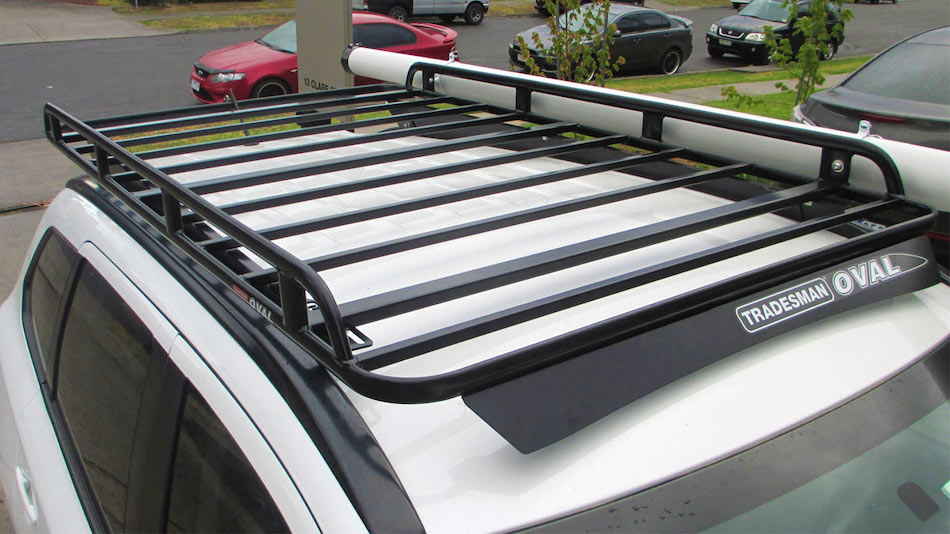
Roof rack
Roof railing is a good option to secure bulky cargo on the roof. The car will not lose in appearance. Rails do not affect aerodynamic performance and fuel consumption. They can not be removed from the car (unlike a home-made trunk-basket, box, which are inconvenient to carry empty).
Transverse
The crossbar is a steel or plastic panel, which is fixed at both ends on the roof of the car or on the railing. Depending on the type of fastening, each latch is attached to the roof with 1-2 bolts or latches.
The finish of the plastic panel can be chrome-plated, painted black. For sedans, hatchbacks, two crossbars are enough, for station wagons, SUVs, three are needed. The overall design allows you to install a load of up to 100 kg on the roof.
Longitudinal
Longitudinal railing - a panel installed in the direction of the machine along the edge of the drain. If the place under the standard trunk is closed with a plug, the hole is degreased before mounting the railing, and sealed when installing the bracket.
If railings are not provided, the panels can be made independently or bought in a store. When mounting on the roof, you will need to drill metal, treat the bracket insertion points with a degreaser. To prevent water leakage, they are additionally treated with a sealant.
Pros and cons of a self-made roof rack
The main advantage of a homemade trunk is the budget cost. You can make a basket from improvised materials. The drawing itself is extremely simple.
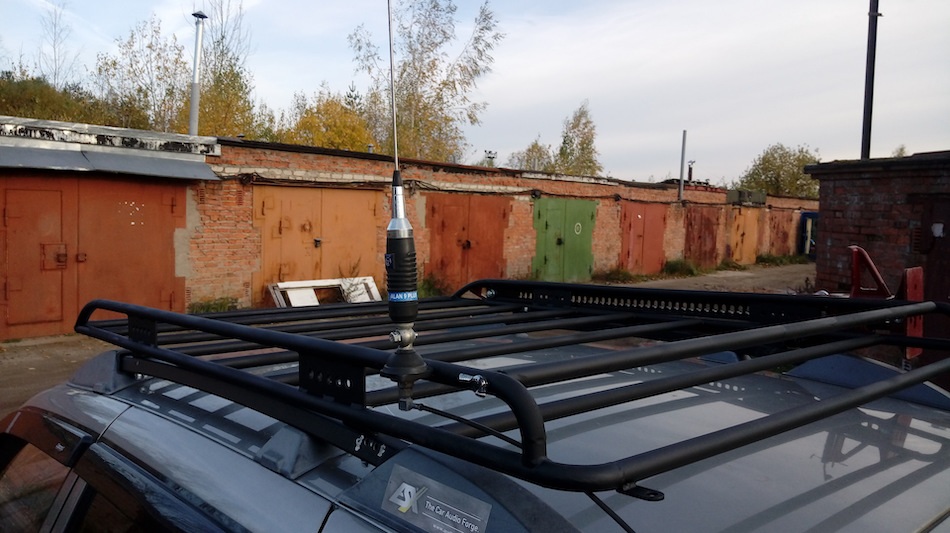
Roof rack
It is difficult to put the trunk in the case when the car is not provided with a trunk at all: you will have to violate the integrity of the roof, mount clamps and brackets.
There are more disadvantages to homemade products:
- An unbalanced shape of the trunk will automatically increase fuel consumption. There is windage, at speed on the track, control worsens.
- Incorrect calculations of load capacity can lead to the fact that the slats are bent, the roof is deformed.
- Installing clamps without consistent metal processing can provoke corrosion and lead to moisture ingress into the passenger compartment.
If there is no welding experience, it is difficult to make a strong, albeit simple, base of 5 planks.
Tips for operation and repair
Roof rails are considered not only narrowly focused parts in the configuration, but also an element of tuning. Chrome-plated standard panels give the car a finished look. Parts are installed once, they do not affect the performance of the car.
The roof rack is removed every time when it is no longer necessary to transport cargo. It is important that installation and dismantling do not take much time. To do this, it is necessary to monitor the condition of the latches, if locks are used, check their performance.
The trunk is repaired in two cases: if it is necessary to renew the coating of the entire cross member or if the steel plate is bent or has begun to corrode. When a crack appears in the cross member, the part changes. The panels can be welded, but this will reduce the overall load capacity of the compartment by 50%.
